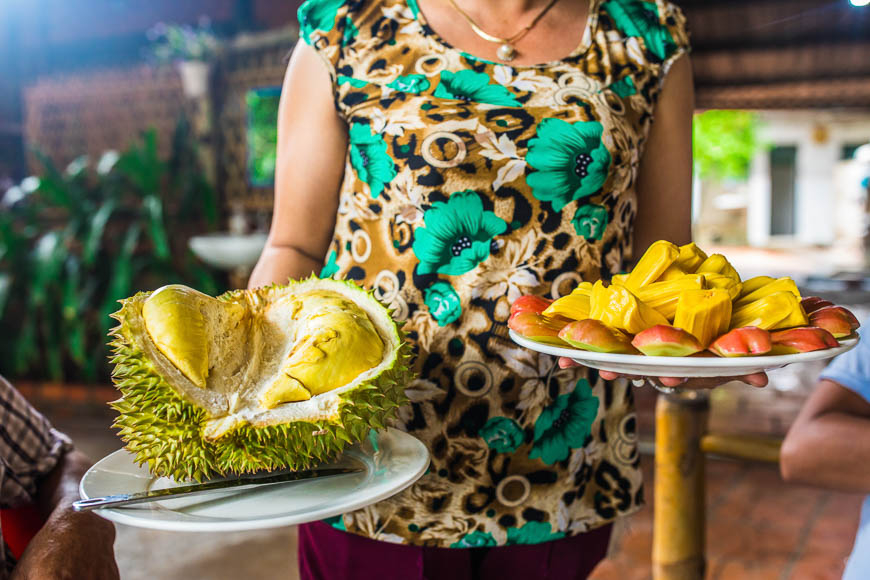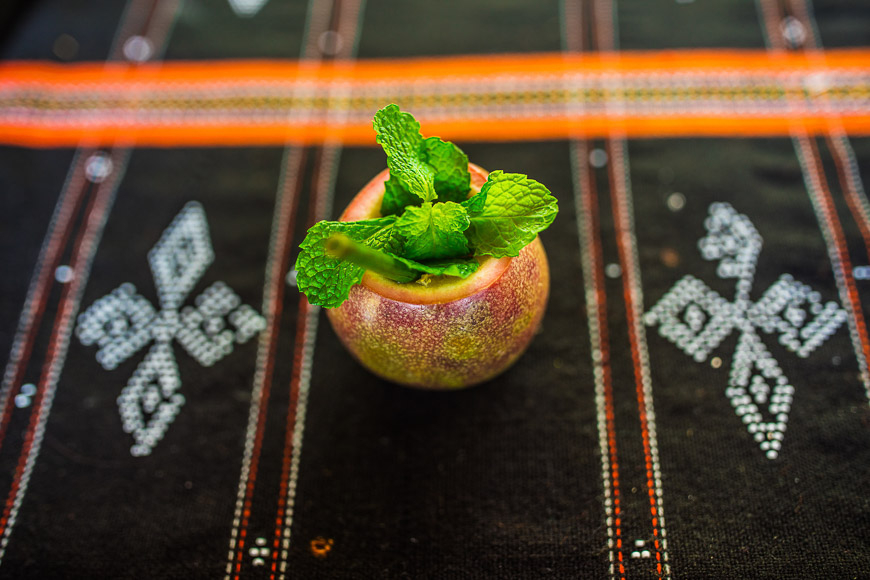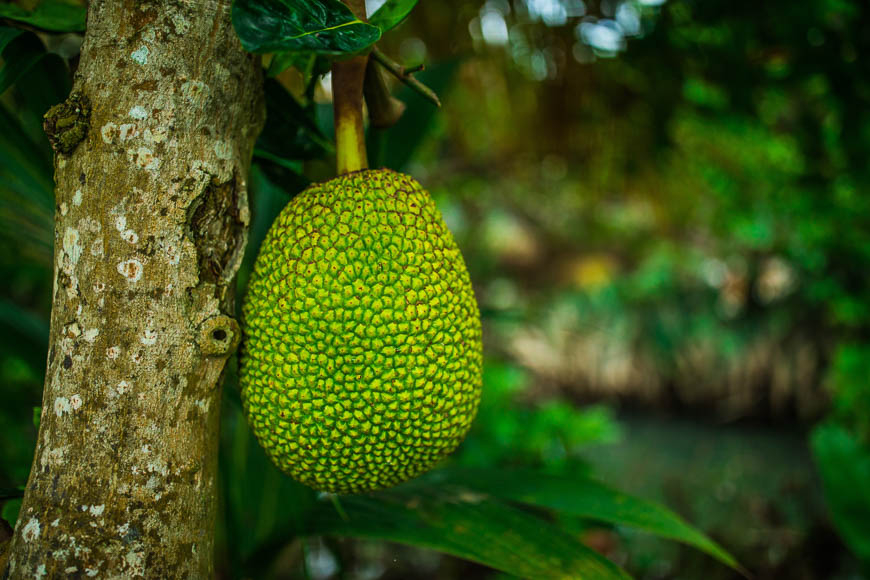
13 incredible fruits from Vietnam
In Vietnam, fruit is an integral part of daily life. Hoa qua (hoa quả) signs perched on neatly arranged pyramids of vibrant fruits may be seen everywhere, from street corners to bicycle vendors. Enjoy your snacks, be daring, and use this guide to explore the amazing world of Vietnamese fruits.
Mangosteen | Măng Cụt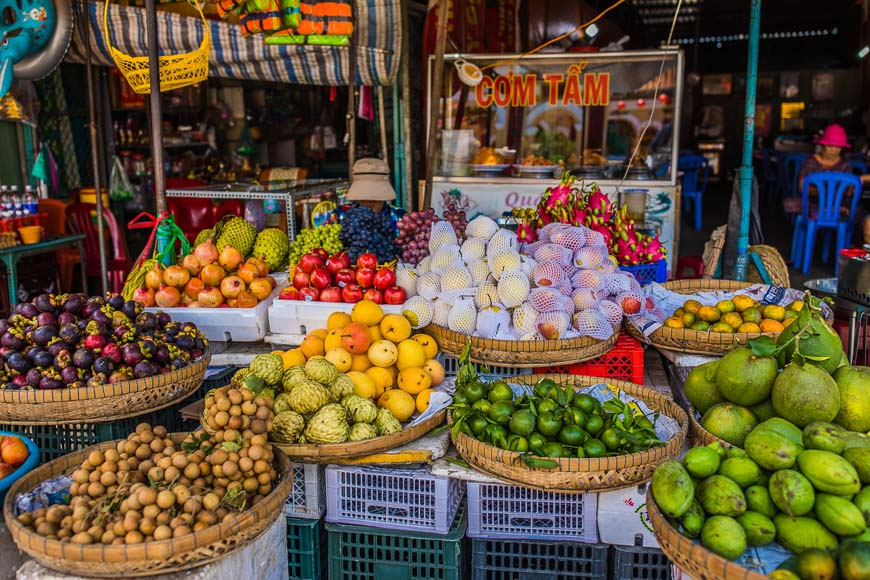
Mangosteen | Măng Cụt
Mangosteen is a fruit that is only available in Vietnam from May through August, and it is undoubtedly one of the most unusual fruits you will ever taste. Mango season is a big deal for the Vietnamese as well. Mangosteens are readily available throughout Vietnam in stores and from street vendors. They have a thick purple peel and soft, acidic flesh.
How to eat it
To separate the fruit's shell and gently snap off the skin, give the fruit a gentle press down the centre. To release the flavor, take a fruit pod out and put it in your mouth. Be cautious since larger pods might contain seeds. Eat mangosteen on its own or as part of a flavorful southern salad (gỏi măng cụt).
Star Fruit | Khế
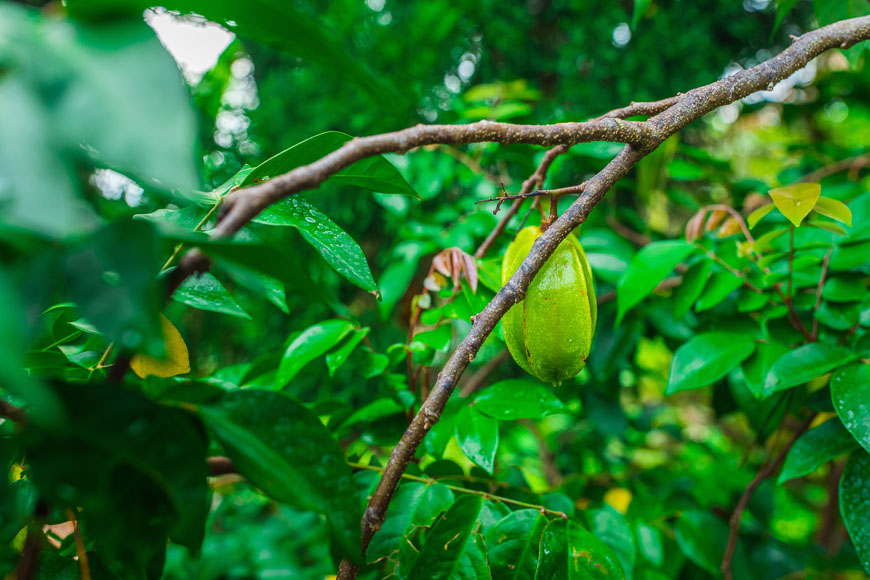 Star fruit is delicious, refreshing, and sure to please when it is ripe and golden. Due to the trees' twice-yearly blooming, their season might be variable. The good news is that you can generally consume this tart treat throughout the year, though you'll have more success finding it in the Mekong Delta.
Star fruit is delicious, refreshing, and sure to please when it is ripe and golden. Due to the trees' twice-yearly blooming, their season might be variable. The good news is that you can generally consume this tart treat throughout the year, though you'll have more success finding it in the Mekong Delta.
How to eat it
Cut your star fruit into ideal star-shaped nibbles by cutting it horizontally. The skin is edible and has to be rinsed before slicing because it is thin and waxy. Star fruit is a common component in canh chua cá, a traditional sweet and sour fish soup that is popular throughout Vietnam.
Rambutan | Chôm Chôm
Rambutan are as tasty as they are colorful, which is a great way of saying "messy hair." Their colorful, hairy covering conceals white, translucent flesh with a mild, grape-like sweet and tart flavor. Big bunches of these eye-catching fruits, which are harvested twice a year, are simple to find throughout the summer and even the winter.
How to eat it
As a nutritious and cooling snack, rambutan is a favorite among Vietnamese people. To uncover the flesh, remove the fruit's exterior with a quick pinch and twist. Then, eat! Simply allow it to ripen a little longer if you are unable to peel it.
Longan | Nhãn Lồng
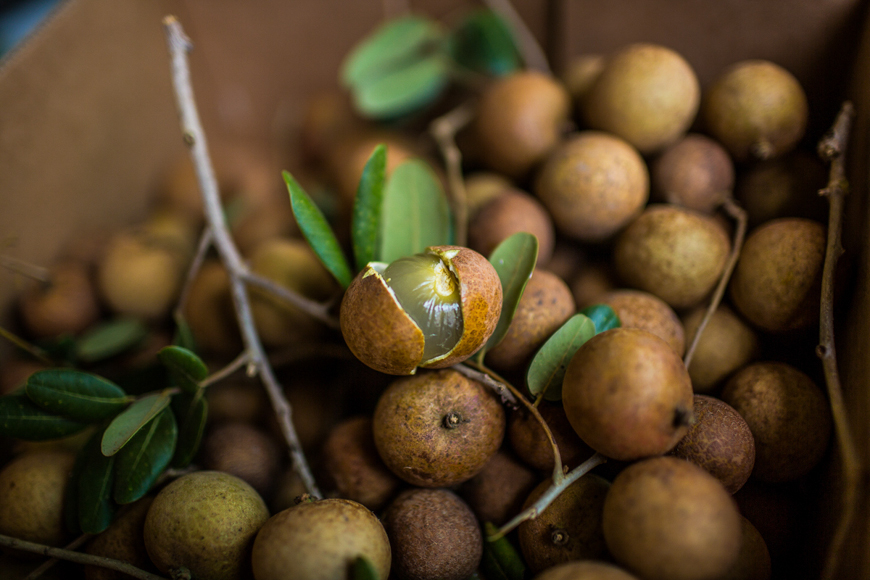 Vietnam's many street markets are filled with enormous bushels of longan, which are popular snacks there. Vietnamese for "dragon's eye," this fruit is frequently compared to the lychee but has more flesh and a milder flavor.
Vietnam's many street markets are filled with enormous bushels of longan, which are popular snacks there. Vietnamese for "dragon's eye," this fruit is frequently compared to the lychee but has more flesh and a milder flavor.
Pomelo | Bưởi
 Pomelos have a milder flavor than grapefruits, which are like them in size. Pomelos are worth the effort even if they could seem daunting. When ripe, this big, slightly oblong citrus fruit is green and only a little bit yellow. In Vietnam, you can see it displayed on special occasions and for the majority of the year.
Pomelos have a milder flavor than grapefruits, which are like them in size. Pomelos are worth the effort even if they could seem daunting. When ripe, this big, slightly oblong citrus fruit is green and only a little bit yellow. In Vietnam, you can see it displayed on special occasions and for the majority of the year.
How to eat it
When the pomelo is sliced open, the thick white pith that covers its light yellow or pink flesh is visible. Pomelo stands out because, after removing the acrid pith, the flesh is composed of odd, tiny sacs that are filled with liquid. A common element in Vietnamese savory salads like gỏi bưởi is pomelo.
Dragon Fruit | Thanh Long
The Mekong Delta is where a lot of dragon fruit, which is a direct translation of its name, is farmed. Dragon fruit has an odd appearance with a thick fuschia rind and outer wispy green tendrils. The flesh is white or purple on the inside and has tiny seeds all over it.
How to eat it
Simply slice the dragon fruit and scrape off the thick rind to eat. Although this cactus has several health advantages, its flavor is actually quite bland and nearly watery. It's a terrific palette cleanser and is frequently enjoyed by the Vietnamese at the conclusion of a meal.
Mangos | Xoài
Mangos, ah! Though they may be among the most well-known fruits on the list, they are definitely worth trying in Vietnam. Vietnamese people enjoy eating green mangoes because they are fragrant and juicy, especially when they are shredded and added to a savory green mango salad (gỏi xoài).
How to eat it
Use a sharp knife to cut a ripe mango around the pit, then carefully split it in half. Another approach involves cutting crisscross patterns along the skin and slicing portions off around the pit. The fruit will nearly stand on its own when you bend the peel back, making it simple to eat off the skin.
Rose apple | Quả Roi in the north, Quả Mận in the south
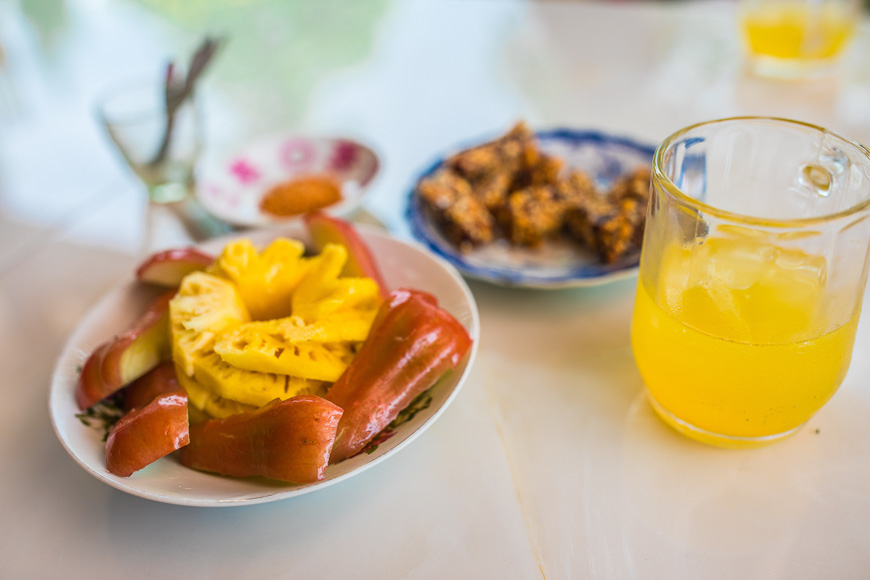 This odd red fruit, which resembles a bell, has a watery feel similar to melon and a crunchy, juicy interior. The flavor of rose apples can be compared to immature pears with a hint of rosewater, and they have soft flesh. The south of Vietnam is where you can find this delightful fruit growing for the majority of the year.
This odd red fruit, which resembles a bell, has a watery feel similar to melon and a crunchy, juicy interior. The flavor of rose apples can be compared to immature pears with a hint of rosewater, and they have soft flesh. The south of Vietnam is where you can find this delightful fruit growing for the majority of the year.
How to eat it
Despite its English name, the only similarity this fruit has to an apple is how it’s eaten. You can munch around the core (just avoid the base) or slice it into quarters and dig in.
Star Apple | Vú sữa
The word for star apple in Vietnamese means "mothers' milk," and it has a connection to an antiquated folktale. This spherical fruit has tight, lustrous skin in violet or green tones and is about the size of an orange. The fruit's interior is white and has a mild flavor, while the skin and rind are bitter.
How to eat it
There are two ways to experience star apples like a local. They are grown in orchards in the Mekong Delta and Central Vietnam. You may either cut it in half and use a spoon to remove the fruit (beware of the huge, inedible seeds), or you can roll it about in your hands to release the fluid inside, then poke a hole in the bottom to drain the milky juice.
Guava | Ổi
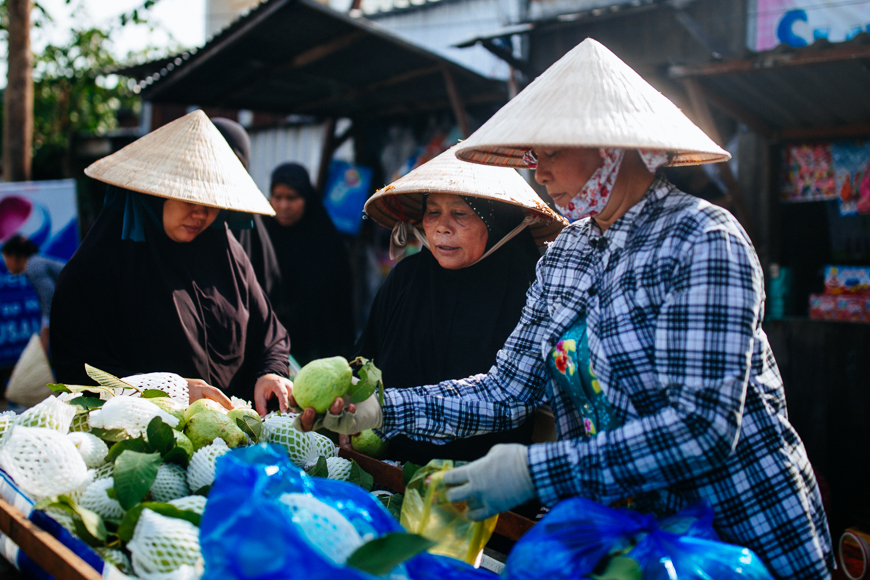 This pear-shaped fruit, which is about the size of a softball, has a rough texture and a light green color. Guavas in Vietnam are green with white or pink flesh and have a subtle, herbal flavor; they are imported from Central America.
This pear-shaped fruit, which is about the size of a softball, has a rough texture and a light green color. Guavas in Vietnam are green with white or pink flesh and have a subtle, herbal flavor; they are imported from Central America.
How to eat it
Guava is a favorite fruit of the Vietnamese, who will eat it ripe or unripe, chopped into chunks, and sprinkled with chile salt. The mild and somewhat acidic flavor of the guava complements the pungent and spicy spice beautifully.
Passionfruit | Chanh Leo
Passionfruit, which is purple and about the size of a tennis ball, is a favorite component of Vietnamese cuisine. The edible seeds have a crisp finish and a flavor that is pleasant. Every season, passionfruit is readily available at sidewalk cafes. Consider consuming it as a juice (nước chanh leo) or combined with yogurt, ice cubes, and a touch of sugar (sữa chua chanh leo).
You can use your hands to gently tear apart the thick rind. Soft yellow and orange seeds found inside passionfruit can be scraped out with a spoon and used to produce sour and energizing cocktails.
Durian | Sầu Riêng
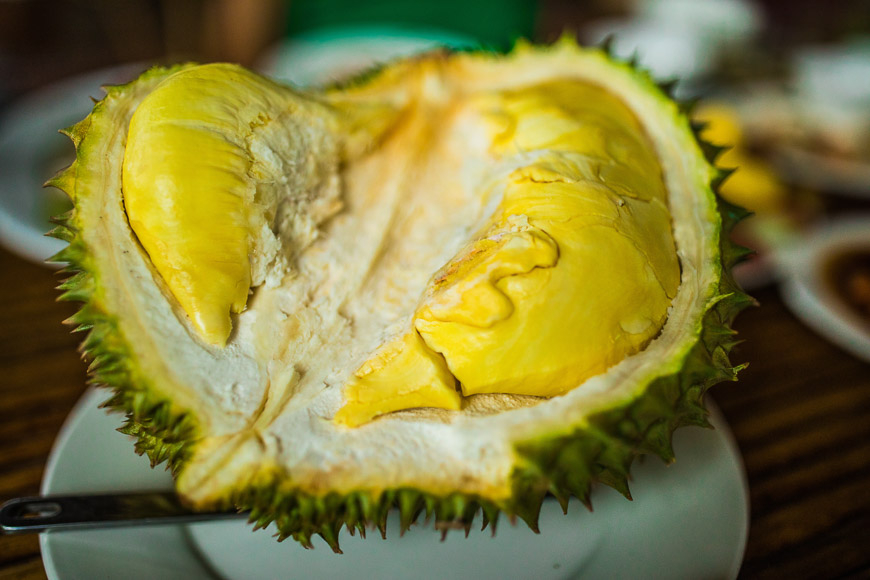 Due to its overpowering odor, which is well-known throughout the world, durian is frequently prohibited from use on public transportation. The "lord of fruits" is unique in both appearance and flavor. Durian's buttery flesh melts on the tongue and leaves behind a powerful flavor and aroma that durian junkies can't get enough of. Its texture is frequently compared to custard.
Due to its overpowering odor, which is well-known throughout the world, durian is frequently prohibited from use on public transportation. The "lord of fruits" is unique in both appearance and flavor. Durian's buttery flesh melts on the tongue and leaves behind a powerful flavor and aroma that durian junkies can't get enough of. Its texture is frequently compared to custard.
How to eat it
Don't be afraid to ask your vendor to cut off a slice for you because durian is tough due to the spikes and odor. Chè Thái, xôi su riêng (sticky rice with durian custard), and bánh pá, a puff pastry with a creamy durian filling, are a few tasty ways to enjoy durian.
Jackfruit | Mít
Jackfruits are similar to durian in size and color on the outside, but once they're opened, they look completely different. The largest and heaviest fruits in the world can grow to be jackfruits. The flesh has a gooey texture, and the skin is covered in ridged lumps. Fruit enthusiasts who prefer tearing off the stringy meat by hand and savoring its sweet, delicate flavor are huge fans of jackfruit.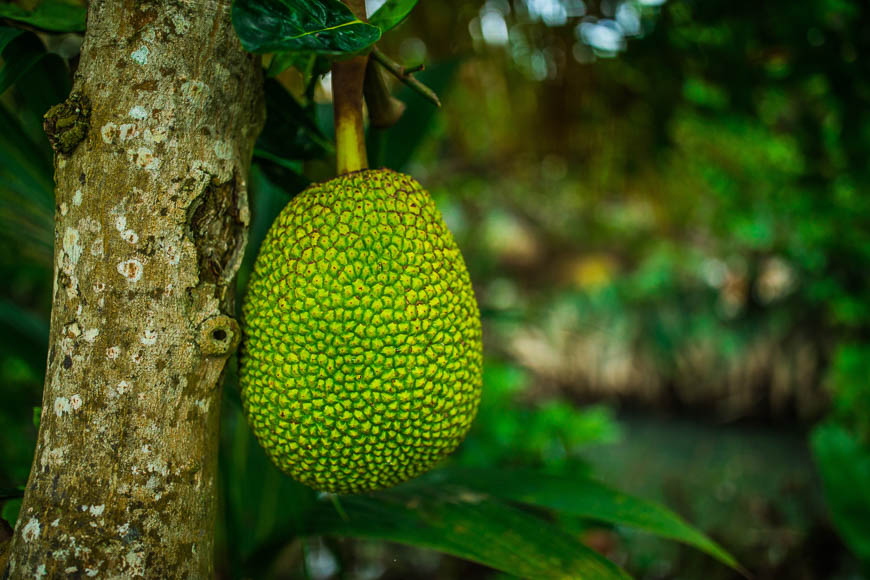 How to eat it
How to eat it
The hardest fruit to open on this list is the jackfruit, which is even more challenging and messy than the durian. Before you start eating, you'll need assistance cracking open the jackfruit. A dish of crushed ice, coconut cream, and mixed fruits known as hoa quả dầm also contains jackfruit.
